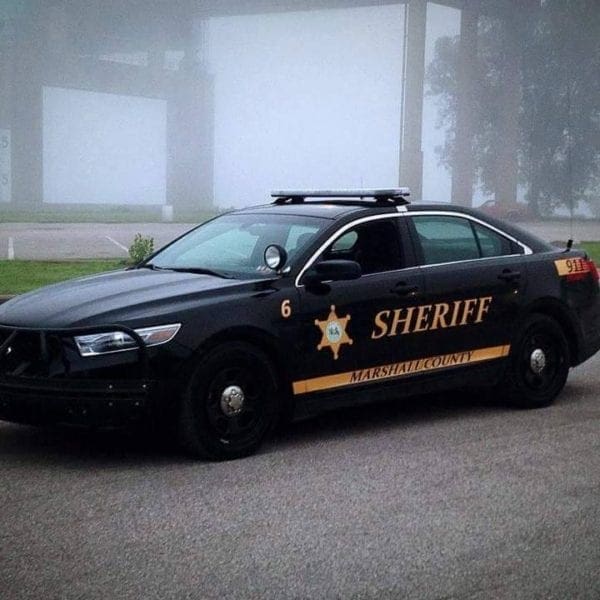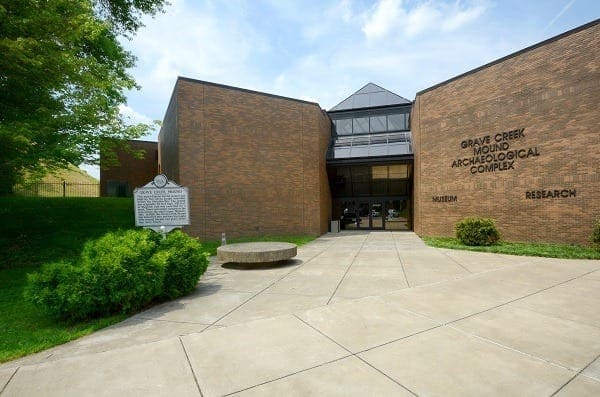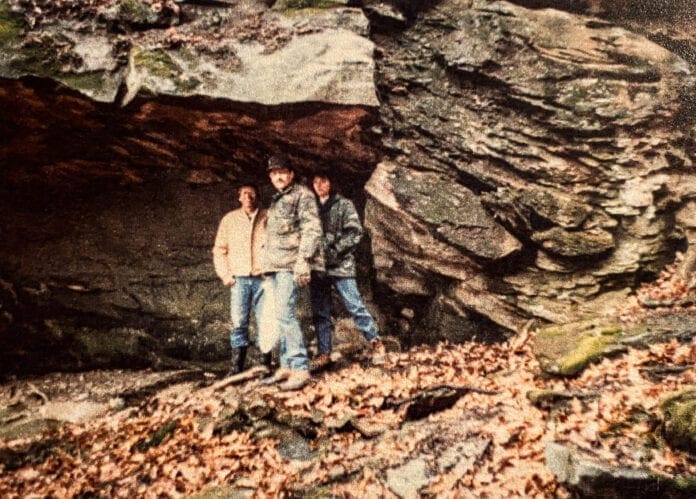The discovery of skeletal remains near Fish Creek in Marshall County was innocent enough.
It was March 1991 when two men were hiking their property near Lynn Camp, and at the time they were about an hour away from their home along Sally’s Backbone, the pair found a large rock overhang that was 15 feet wide and 10 feet deep. While looking around, one of the men spotted something that looked like a bone, but it was difficult to tell because several large rocks partially covered the area of the overhang.
After the men removed the parge rocks, they discovered what appeared to be the remains of an adult and of an infant, and after checking the encyclopedia, they called the Marshall County Sheriff’s Office to report the discovery.
When the investigator, Deputy Dan Livingston responded, the men ushered him to the overhang. That is when Livingston examined the scene, gently removed the remains of both the adult and infant, and then used an old window screen to scour the earth in the area where the bones had been removed in an effort to find anything that could date the remains.
But Livingston did not discover a belt buckle or even a button, and because there wasn’t any flesh left on the skeletons and it appeared rodents had gnawed on the bones, the investigator became convinced the deceased had been in that location for many years prior to being found. Livingston then began searching for a missing person report, and not one filed in Marshall County matched the few facts he had collected.
“Dan most definitely did his due diligence at the time; that’s for sure,” Marshall County Sheriff Bill Helms said. “The number of resources he had at that time was very limited compared to what we work with today, but he took advantage of what he could in an effort to identify the individuals who were found under that rock overhang. And you can tell from the file that, even though he was working on several other cases at the time, he constantly checked on new leads in this case.”

Questions and Answers
Deputy Livingston found a respected anthropologist, Dr. Dennis Dirkmatt, who was on the staff at the University of Pittsburgh a couple of years after the remains were discovered. Dirkmatt agreed to examine the skeletons to possibly discover a cause of death or maybe even date the bones.
Initially, the anthropologist determined the remains were not prehistoric and that the adult skeleton was that of a female in her 30s who stood 5-foot-5. But there were questions Dirkmatt was unable to answer.
Did the large rocks found on top of the remains kill the two people? Or did the female pass away while giving birth to the infant?
Dirkmatt then examined the remains a second time, and his conclusions then completely contradicted his initial findings. This time he reported to Livingston that he believed the remains to be prehistoric, and Dr. Olivia Jones, an archaeologist on staff at the Grave Creek Mound Archaeological Complex in Moundsville, agreed following her examination in 2020.
Not only did her report instigate former Marshall County prosecutor Rhonda Wade to officially declare no foul play was involved; it satisfied Sheriff Helms, as well.
“I was discussing the case with the investigator in charge of looking into that report, and I asked him where we were with the carbon dating of those remains, and he told me that the people from the Grave Creek Mound said it’s not necessary to put the remains through that testing,” Helms reported. “He told me the experts are convinced that the remains are prehistoric Native American. They are experts in that field, and if they believe there’s more than enough evidence already to determine that the woman and her baby are prehistoric, I respect that.
“I have to defer to their expertise,” the sheriff continued. “My investigator told me they are convinced they are Native American and that the woman went to that rock overhang to give birth to the child. And yes, it sure is an interesting story that I still find fascinating to this day. If you think back a couple of hundreds of years, those folks really had to endure the hardest of times compared to how we live today.”
Helms, however, does remain curious only because the radiocarbon testing has not taken place.
“There is still a part of me that hopes someday down the road the remains are carbon-dated, but that’s just the cop inside of me wanting to know, but when you have such qualified individuals telling you that it’s not necessary, I have to go with that assessment,” the sheriff said. “And I can understand why those folks don’t want to handle or destroy any portion of the remains. That’s out of respect for the people from that time, and that’s completely understandable.
“Those remains are being protected because of the amount of respect we have for that history and for the people who were here in this area well before we were,” Helms continued. “Moundsville, of course, got its name because of the practices of the Native Americans, and it’s good to see the amount of respect we now have for that history. For today’s experts, it’s intimately sacred to them, and I respect that wholeheartedly.”
Dr. Jones explained the destructive nature of radiocarbon testing and the process that is necessary before such an examination takes place.
“When radiocarbon testing takes place, it means a portion of the remains would have to be burned so that carbon can be tested,” she explained. “The thing about that test is that it reveals the age of the remains but would not determine for us whether or not they belong to Native Americans. But if we wanted to move forward with the testing, it would be up to the Native American groups we work with in order to get as much history from that time.
“I cannot say the radiocarbon testing will never take place, but there is a process. So, at this time, the remains are in our federal inventory and are protected by several federal laws that were put into place in the 1990s,” she reported. “So, we are holding those remains in trust for the Native Americans that we know inhabited this area. There were members of the Seneca, Delaware, Mingo, and Shawnee tribes that lived here hundreds of years ago.”

The Complexity of the Complex
The Grave Creek Mound Archaeological Complex is located across from the former West Virginia Penitentiary and adjacent to the Grave Creek Mound. The museum is open Tuesday through Saturday from 9 a.m. until 4:30 p.m., and the staff welcomes local residents and school groups from throughout the Upper Ohio Valley.
The mission of the complex, according to its website, is to preserve the site of the Grave Creek Mound, interpret the archaeological record of West Virginia for the public, and manage the state’s archaeological collections. The museum’s exhibits include fossils and ice-age animals, tours of archaeological sites in the Mountain State, a large model of the prehistoric Adena people, and the construction of the Grave Creek Mound.
“The museum at the Grave Creek Complex is a fascinating place because there is so much history inside that building. It’s not a huge place, but there’s so much in there,” Sheriff Helms said. “They have displays set up that depict how the Native Americans lived in this area at that time and how they worked and accomplished what they could. It really gives you a perspective, and the displays really allow a person to further understand how life was in this area a couple of hundred years ago.
“Everyone knows about the Grave Creek Mound in Moundsville and the smaller mound near the Cockayne House, but it’s been revealed that there were many more in this area until a lot of development started taking place in this area,” he explained. “Most of them were bulldozed at that time because those people didn’t have the full understanding of the history that we do now, and that’s a shame.”
One presentation that will never be viewed by visitors, though, is exhibited with skeletal bones, and that includes the remains of the lady and her baby from Marshall County.
“We do have displays in the museum, but we will never display any of the remains that have been discovered in this area or anywhere else,” Jones said. “That’s because of the federal laws, but also out of respect for the people of those periods of history.”



My wife’s family owned a considerable amount of property on Fish Creek. I remember a story told to me by her uncle who still lived there. He said that one day, they were plowing a field and the plow became entangled with a large stone. When they moved the stone, there was a skeleton that they believed to be an indian. Authorities were notified and the remains were removed. That was the Arnold farm.